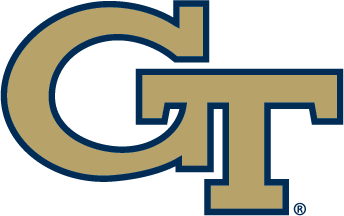Nov. 14, 2015
By Matt Winkeljohn | The Good Word
Friday night inside McCamish Pavilion, Georgia Tech looked different individually and as a team when the season opened against Cornell to a point where it may seem as if primary ball handlers have multiplied.
Head coach Brian Gregory’s point is for the Yellow Jackets not to worry as much about getting the ball in the hands of his point guards — at least in transition.
Gregory’s goal is to pick up Tech’s offensive pace, and cash in more easy scoring opportunities. The Jackets’ point guards, shooting guards and small forwards will be a sizable part of this transition.
Sophomore Travis Jorgenson and junior Josh Heath are still likely to have the ball in their hands the most, as point guards will still quarterback Tech’s offense. But just as football is seeing more snaps directly to non-quarterbacks, Gregory wants to give more Jackets more chances to get the ball and . . . go.
When Tech gathers a defensive rebound, or steals a ball in the back court, whomever does the deeds is to scrap the idea of scanning the floor and then passing to a point guard to start the defense-to-offense transition.
“To try to speed the game up, we’re trying to give these guys a little more freedom,” said assistant coach Chad Dollar, who works chiefly with Tech’s shooting guards and wings. “It will speed the game up, get us more easy baskets and it takes a little bit of pressure off the point guards, too.”
Tom Herrion, who spends most of his time tutoring point guards, said, “When you have to hunt a point guard on every outlet or change of possession, there’s a momentary lapse or pause . . . as we make sure we get it to a point guard.”
If one of Tech’s “bigs” gets that ball, he might not start up the floor himself, but neither he does he have to find a point guard before proceeding.
Tech’s point guards, shooting guards, small forwards and even some of the bigs will have the green light to dribble or pass to the closest shooting guard, wing man or, yes, point guard.
With an eye toward versatility, here’s at look at Tech’s, “littles,” or non-post players, their roles and improvements from last season:
Senior Marcus Georges-Hunt has start all but one of the 94 games he’s played for the Jackets – excluding the first game of last season’s ACC Tournament, when he was out with a broken foot – and he’s going to be front and central again.
Georges-Hunt is accustomed to having the ball in his hands as Tech’s leading scorer (13.6 points per game last season), and when an opponent chooses to pressure the Jackets’ point guards.
The 6-foot-5, 216-pound guard/forward should flourish.
“It gives Marcus more opportunities to use more of his skills,” Dollar said. “He’s done that a little bit in the past. When we play somebody like Duke, who applies a lot of pressure, we’ve put the ball in his hands.”
Tech fans know more about Georges-Hunt than any other player, yet the one Jacket who may make the biggest difference this season could be newcomer Adam Smith.
The 6-1, 165-pound graduate student is a “guard,” period.
His primary skill set would dovetail into the description of a traditional shooting guard as he led the ACC in 3-point shooting last season while nailing 42.4 percent (81-of-191) in his second season at Virginia Tech.
The Jonesboro native has a career sharpshooter’s mark of .376 and has uncanny range.
That combined with his ability to find open teammates makes him especially valuable. In one season at UNC-Wilmington and two at Virginia Tech, he had 109 assists in 78 games.
His shooting ability and the danger he poses as a shooter may twist opposing defenses and boost the confidence of teammates who will have to worry less about their own shooting while knowing he’s on the floor.
Smith’s dead-eye tendencies and quick shot release figure to update the Jackets’ offense –which has been plagued by substandard long-distance shooting.
“His ability to stretch the floor is something that we didn’t have last year, and I’m very confident that it’s going to create space for our other guards on the floor,” Herrion said. “Adam, whether he’s on the ball or off the ball, he’s going to command attention and that’s going to create space for us.”
Tadric Jackson is another Jacket with a chance to effect change.
His freshman season fell well below expectation. He’s shaved more than 20 points, though, and the 6-2 shooting guard/wing has been impressive in practices, and even on the Jackets’ summer tournament in the Bahamas.
“Tadric’s biggest key, because he has all the physical abilities . . . he just has to stay in top condition,” Dollar said of a player who last season averaged 5.4 points on 27.4 percent shooting, well below the standard he set as a high school senior at Tift County, where he was named the Georgia all-class state Player of the Year.
“He has to keep his weight down. When he does, all his skill set can be seen.”
Jorgenson’s weight hasn’t changed all that much, but in a recent open practice, he looked like a new player.
While playing his first full season for the Jackets on a repaired knee, he had moments last fall/winter.
Moving quickly beyond the fact that he had 16 assists and just three turnovers in 68 minutes in three games in the Bahamas, the 6-foot native of Columbia, Mo., looked in a recent practice like a new young man.
His shot is quicker, his elevation on that shot is greater, he’s changing direction with far more authority, and there is reason to believe that he can improve up last season, when he averaged 3.7 points, 3.3 assists and shot 31.1 percent.
Jorgenson is more decisive and sharp.
Tech coaches have tweaked that jump shot, and he’s more physical than fans will remember, yet the Business Administration major’s greatest gain may be between the ears – because his anterior cruciate knee ligament that he tore shortly into his freshman season is whole again.
“There’s no doubt he’s vastly improved in almost every area of his game, most importantly athletically,” Herrion said. “He’s so much bigger, stronger, faster, and I think a lot of it is mental. Coming off that [knee injury], there’s inhibition.
“Not that he’s a high-flying athlete, but he’s much more explosive. All of his measurables are greater, and equal to that he’s much more comfortable from a mental standpoint. He’s truly shooting much more of a jump shot with elevation, and he’s got more confidence that at any point last year.”
Tech’s point guards are changing, too; it’s not just the wing men.
“They probably have had to adjust more because they’ve got to learn to fly and fill lanes [on a break], and that’s not how they’re wired,” Herrion said. “It’s not as natural for them to fill a lane as Marcus or Tadric or the other wing guys.”
Heath, who shared most point guard duties last year, is changed physically and mentally as well.
He played hurt last season, which few if any fans probably realized, and had surgery after the season to correct a double hernia. The 6-2 guard has a nice runner, and appears more bold.
“He’s had a pretty good mid-range game,” Herrion said of Heath, who averaged 4.3 points per game on 41.2 percent shooting while pitching in 83 assists in 31 games. “He’s so much better athletically because he’s not inhibited by the injury factor. What Travis did to his knee, and with Josh . . .now, they’re bigger, stronger and quicker.”
Corey Heyward will handle the ball from time to time, but it would be folly to pin him to a position. The 6-1 fourth-year junior has fought through two major knee injuries, and may be Tech’s top perimeter defender.
He’s shed weight, and no longer closely resembles his brother, Pittsburgh Steelers defensive lineman Cameron Heyward, nor his late father, former NFL running back Craig Heyward, and fills a unique role.
“When we need somebody to come in and play [point guard], he’s got to play the one. When we need somebody to play [shooting guard], he’s got to play the two,” Dollar said. “When we need somebody to play [small forward], he’s got to play the three. He has to be a great defender.
“He’s never going to be a great scorer. That’s not his strong suit, but he can bring value to the team being a great defender, a guard rebounder, a glue guy. That was one of the main reasons we recruited him . . . being that tough, gritty, glue guy. You can’t have everybody shooting the ball, trying to hunt shots.”
Quinton Stephens can sink some serious shots.
The junior swingman made more 3-point shots last season (32) than all of his teammates, but he also missed more (75). When he’s on, like when he stuck 5-of-7 at N.C. State while scoring 13 points, Stephens is slick.
He made just 9-of-31 shots over the Jackets’ 11 games, however, and the 6-9 forward’s greatest struggles come in defensive matchups – where his height doesn’t index particularly well with his weight (203 pounds) and when he misses a few shots. Then, he has a tendency to miss more.
“He’s added some weight. That’s going to be a continuing battle for him,” Dollar said. “Sometimes, he over-analyzes too much and that goes into his inconsistency in shooting. Having another guy out there that they’re keying on [like Smith], he should be able to get some quality looks.”









